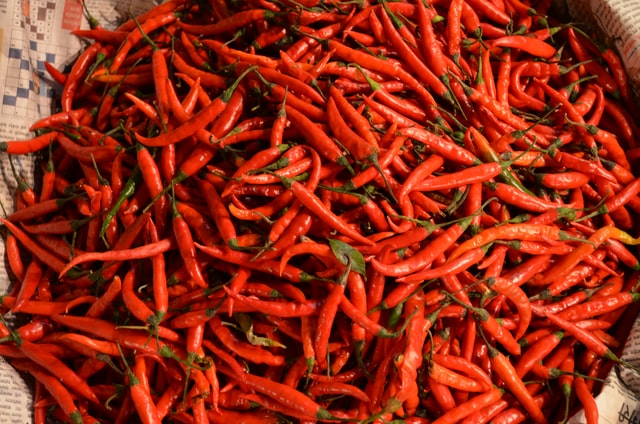Chili peppers have always been part of Ghana’s agriculture and diet. Chili peppers require sunny, semi-tropic or tropical conditions and annual rainfall of between 600mm and 1,250mm. They have a relatively quick growing and harvesting period of 3 to 4 months in Ghana and are generally grown by local farmers during the rainy season. Most chili peppers are currently produced under rainfed conditions without irrigation systems, which causes a significant drop in production volume during the dry season. It is estimated that the Ghanaian chili farmers are only producing at 50 percent of attainable yields because of the lack of irrigation systems and improved inputs. After harvesting, farmers sell their chili peppers to exporters at farm gate prices ranging from GH¢ 0.5 to 1($0.35-0.70) per kilogram throughout the year.
I must explain to you how all this works

Although Ghana has been exporting chili peppers for over fifteen years, significant growth in the production of chili peppers for export is relatively recent phenomenon. The growth in exports was prompted by the development of a hybrid chili pepper, legon 18 developed specifically for Ghanaian soil by researchers at the University of Ghana-Legon. In addition to being well-suited to Ghanaian soil and climate conditions, Legon 18 is designed to maintain freshness to enhance its exportability. Since becoming more widely available, Legon 18 has been increasingly produced for export by local farmers through MiDA technical training programs and is now exported to nine countries.
Bird eye chili pepper production has also been increasing in Ghana. Bird’s Eye pepper is widely produced in India, Thailand, Vietnam and Malaysia. Bird’s Eye chili has a very high capsicum content, which are 100,000 to 225,000 Scoville Heat Units, and therefore yields a high market price in export markets and experiences less price volatility. This is partly due to its alternative industrial use in pepper spray. Bird’s Eye chili grows in similar conditions to Legon 18; thus, Ghanaian climate and soils are suitable for its production. For these reasons, Bird’s Eye chili pepper production also represents an opportunity for a nucleus farmer model.
Tchorly farms have therefore over the last ten years being involved in the research and production of a variety of chilli peppers for export. Our production increases annually at a good rate in terms of yields. This has been the backbone of our vegetable production system mainly because of the exportable nature of the products.


